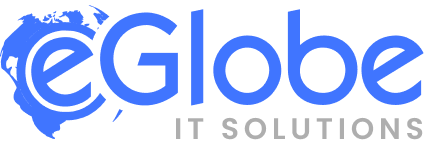Imagine launching your Shopify store into the dynamic, fast-paced world of UAE eCommerce, where every click, swipe, and interaction could be the turning point for your business. In a market where digital transformation is not just an ongoing trend but a way of life, consumer expectations have soared. Shoppers demand not only speed and convenience but a shopping experience that is seamless, secure, and highly personalized. The challenge? It’s no longer just about getting your store online—it’s about keeping it at the forefront of a rapidly evolving marketplace.
The UAE’s online commerce scene has experienced explosive growth, driven by near-total internet penetration, a population of tech-savvy consumers, and a widespread shift toward online shopping. But with this growth comes increased competition, and businesses must navigate a complex landscape filled with technological challenges, security risks, and the relentless need for innovation.
For those leveraging Shopify as their eCommerce platform, these challenges can be particularly pronounced. As your business scales, ensuring that your store can meet the increasing demands of your customers while maintaining top-tier performance and integrating the latest features is not just beneficial, it’s essential. This blog explores the common growing pains that eCommerce businesses in the UAE face and outlines the critical strategies for upgrading, maintaining, and enhancing your Shopify store to not only survive in this competitive environment but to thrive and lead.
The eCommerce Boom in the UAE: Opportunities and Challenges
The UAE is at the forefront of eCommerce in the Gulf Cooperation Council (GCC) region, with a market that has seen explosive growth in recent years. This boom is driven by several factors, including nearly 100% internet penetration, widespread use of mobile devices, and a consumer base that increasingly prefers online shopping over traditional retail.
However, with growth comes challenges. As more businesses enter the eCommerce space, competition intensifies. Consumers in the UAE have high expectations for seamless, fast, and secure online shopping experiences. Additionally, the rapid pace of technological advancements means that businesses must continuously innovate to stay ahead of the curve. This is where Shopify comes in, offering a powerful platform that can be tailored to meet the unique needs of UAE businesses. But to truly leverage Shopify’s capabilities, businesses must address the common pain points associated with eCommerce growth.
The Growing Pains of eCommerce in the UAE
1. Scalability Issues
One of the most significant challenges that businesses face as they grow is scalability. What worked for a small business with a limited product range may not suffice as the business expands. Issues such as slow load times, limited customization options, and inadequate inventory management can all become significant roadblocks. In the UAE, where consumers expect high performance and quick access to products, these issues can lead to lost sales and diminished customer trust.
2. Security Concerns
With the rise of eCommerce, cybersecurity has become a top concern for businesses and consumers alike. In a region like the UAE, where online transactions are increasingly common, any breach of security can have devastating consequences. Cyber threats are constantly evolving, and businesses must be proactive in safeguarding their Shopify stores. This includes implementing advanced encryption, multi-factor authentication, and regular security audits.
3. Mobile Optimization
Mobile commerce, or m-commerce, is a rapidly growing segment of the eCommerce market in the UAE. With over 50% of eCommerce traffic coming from mobile devices, businesses must ensure that their Shopify stores are fully optimized for mobile users. This includes responsive design, fast loading times, and easy navigation. However, many businesses struggle with mobile optimization, leading to poor user experiences and lost sales.
4. Integration Challenges
As businesses grow, they often need to integrate their Shopify stores with other platforms and tools, such as Customer Relationship Management (CRM) systems, Enterprise Resource Planning (ERP) software, and social media channels. However, these integrations can be complex and time-consuming, often requiring specialized knowledge and expertise.
5. Keeping Up with Technological Advancements
The pace of technological change in the eCommerce industry is relentless. New tools, features, and platforms are constantly being developed, and businesses must stay on top of these advancements to remain competitive. In the UAE, where consumers are quick to adopt new technologies, failing to keep up can result in a loss of market share.
Upgrading Your Shopify Store: Key Considerations
Upgrading your Shopify store is a critical step in addressing the growing pains of eCommerce and positioning your business for long-term success. Here are some key considerations for businesses in the UAE:
1. Shopify 2.0: The Foundation for Growth
Shopify 2.0 offers a range of new features designed to help businesses scale more effectively. These include improved theme architecture, better performance, and enhanced customization options. By upgrading to Shopify 2.0, businesses can create a more flexible and scalable online store that can handle increased traffic, larger product catalogs, and more complex operations.
2. Performance Optimization
As your business grows, ensuring that your Shopify store can handle increased traffic and transactions is essential. This includes optimizing your store’s speed, improving server performance, and leveraging content delivery networks (CDNs) to reduce load times. Regularly monitoring your store’s performance and making necessary adjustments can help you maintain a fast, responsive website that meets the demands of your customers.
3. Security Enhancements
Upgrading your Shopify store’s security features is critical to protecting your business and customers from cyber threats. This includes implementing SSL certificates, using two-factor authentication, and regularly updating your store’s security settings. Additionally, conducting regular security audits can help you identify and address potential vulnerabilities before they become a problem.
4. Mobile Optimization
With the majority of eCommerce traffic in the UAE coming from mobile devices, optimizing your Shopify store for mobile users is essential. This includes using responsive design, optimizing images and videos for mobile, and ensuring that your store loads quickly on all devices. Additionally, leveraging Shopify’s mobile-first design capabilities can help you create a seamless shopping experience across all platforms.
5. Integrations and Automation
Integrating your Shopify store with other platforms and tools can help streamline operations, improve efficiency, and enhance the customer experience. This includes integrating with CRM systems, ERP software, and third-party logistics providers. Additionally, leveraging automation tools can help you manage inventory, fulfill orders, and communicate with customers more effectively.
The Importance of Regular Maintenance
Upgrading your Shopify store is just the first step. To ensure that your store continues to perform at its best, regular maintenance is essential. This includes:
- Performance Monitoring: Regularly monitoring your store’s performance can help you identify and address issues before they impact your customers. This includes tracking load times, bounce rates, and conversion rates.
- Security Updates: Cyber threats are constantly evolving, and it’s essential to keep your Shopify store’s security features up to date. This includes installing the latest security patches, using strong passwords, and implementing multi-factor authentication.
- Mobile Optimization: As mentioned earlier, mobile optimization is crucial in the UAE market. Regularly testing your store’s mobile performance and making necessary adjustments can help you stay ahead of the competition.
- SEO Optimization: Search engine optimization (SEO) is vital for driving traffic to your Shopify store. Regularly updating your SEO strategy, including keyword research, content optimization, and backlink building, can help you maintain a strong online presence.
Enhancing Your Shopify Store: Leveraging New Features and Technologies
In addition to upgrading and maintaining your Shopify store, it’s important to continuously enhance it with new features and technologies. This can help you stay competitive and meet the evolving needs of your customers. Some key enhancements to consider include:
- Augmented Reality (AR) and Virtual Try-Ons: In the UAE, where consumers are tech-savvy and value convenience, AR and virtual try-ons can provide a unique shopping experience that sets your store apart. These technologies allow customers to visualize products in real-time, reducing the likelihood of returns and increasing customer satisfaction.
- AI-Powered Personalization: Personalization is becoming increasingly important in the eCommerce industry. AI-powered tools can help you deliver personalized product recommendations, targeted marketing campaigns, and customized shopping experiences based on customer behavior and preferences.
- Advanced Analytics and Reporting: Understanding your customers’ behavior is key to optimizing your Shopify store. Advanced analytics tools can provide insights into customer demographics, purchasing patterns, and product performance, helping you make data-driven decisions.
- Loyalty Programs and Gamification: Loyalty programs and gamification can help you build stronger relationships with your customers and increase repeat purchases. Consider integrating these features into your Shopify store to enhance customer engagement and drive sales.
Streamlining Operations with Shopify Integrations
As your business grows, integrating your Shopify store with other platforms and tools can help you streamline operations and improve efficiency. Some key integrations to consider include:
- CRM Integration: Integrating Shopify with your CRM system can help you manage customer relationships more effectively, track interactions, and provide personalized service.
- ERP Integration: Integrating Shopify with your ERP system can help you manage inventory, orders, and finances more efficiently, reducing the risk of errors and improving overall business operations.
- Social Media Integration: Social media integration allows you to reach a wider audience and engage with customers where they spend most of their time. Shopify’s multi-channel selling features make it easy to connect your store with social media platforms, enabling you to sell directly through these channels.
Conclusion: Partnering with Experts for Success
Navigating the challenges of eCommerce growth in the UAE requires a strategic approach that includes upgrading, maintaining, enhancing, and integrating your Shopify store. However, these tasks can be complex and time-consuming, often requiring specialized knowledge and expertise. Partnering with experienced Shopify experts can help you overcome these challenges and ensure that your store is optimized for success.
At eGlobe IT Solutions, we specialize in helping businesses in the UAE unlock the full potential of Shopify. Whether you need help with upgrading your store, maintaining its performance, enhancing its features, or integrating it with other platforms, our team of experts is here to support you every step of the way. Contact us today to learn how we can help you achieve your eCommerce goals.





